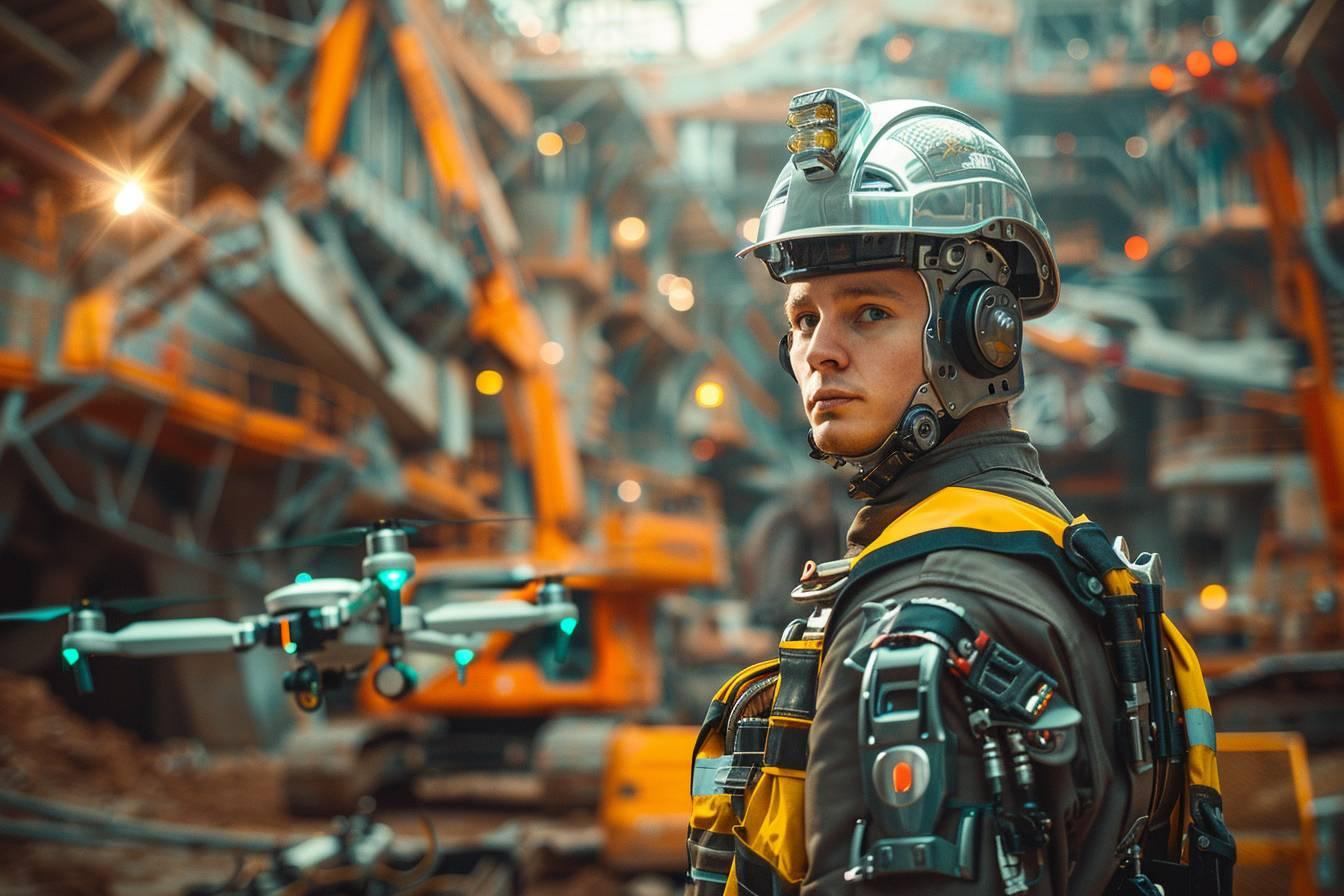Autonomous worksites are revolutionizing the construction industry, offering innovative solutions to improve efficiency and productivity. These technological advances reduce costs, optimize resources and minimize environmental impact. Let’s discover the equipment that is transforming modern construction sites.
Technological innovations for optimum lighting
Lighting plays a crucial role in the safety and efficiency of construction sites. The latest generation of self-contained floodlights is revolutionizing the illumination of work areas. These high-tech devices offer unrivalled flexibility, adapting to even the most challenging environments.
The outstanding features of these floodlights include :
- Light heads equipped with 30 ultra-bright LEDs
- Impressive light output of 6600 lumens at full capacity
- 360° rotation for omnidirectional illumination
- Three lighting modes adaptable to specific needs
These innovative floodlights feature an extendable fiber pole, typically 1.80 meters long, made up of four elements. This design enables versatile use, whether as a portable spotlight or a fixed area light. What’s more, options such as a magnetic holder or 3-meter pole offer greater adaptability to different worksite configurations.
The energy autonomy of these floodlights is ensured by various power supply options:
- Lead gel battery
- Lithium battery
- Double lithium battery for extended autonomy
Some models even offer a cigarette-lighter rechargeable version, ideal for mobile worksites or emergency interventions. These features make these headlamps indispensable tools for emergency services, security teams and industrial maintenance professionals.
Innovative sanitary solutions for construction sites
Hygiene and worker comfort are essential on a self-contained construction site. Our new-generation self-contained toilet cubicles meet these needs while adapting to the constraints of construction sites. These mobile sanitary installations offer considerable advantages in terms of practicality and efficiency.
Here’s an overview of the technical features of these innovative toilet cabins:
| Features | Specification |
|---|---|
| Dimensions | 2.33m × 1.12m × 1.22m |
| Weight | 75kg |
| Tank capacity | 265 liters |
| Ventilation system | Powerful, integrated |
These self-contained sanitary cabins integrate both a toilet and a urinal, offering a complete solution for workers’ needs. One of the main advantages of these installations is their independence from the water and electricity networks. This makes them particularly suitable for isolated or temporary worksites.
The recirculating flush system, operated by a hand or foot pump, ensures water-saving use. To further improve hygiene on the worksite, a hand-washing option can be added. With a 38-liter tank, this option allows up to 186 uses, guaranteeing optimum hygiene throughout the working day.
The sturdy, durable design of these WC cabins ensures their resistance to the harsh conditions of worksites. What’s more, their ease of maintenance helps to maintain a clean and pleasant sanitary environment for users.

Associated services for optimum autonomous worksite management
Setting up and maintaining self-contained equipment on a worksite requires specific expertise. That’s why many suppliers now offer a full range of associated services to ensure the smooth operation of these innovative installations.
Here is a list of the main services offered to support professionals in managing their autonomous worksites:
- Delivery and installation: transport and installation of equipment on site
- Assembly and commissioning: assembly and configuration of systems for immediate use
- Regular maintenance: preventive maintenance to ensure equipment longevity
- Emptying and cleaning: waste management and sanitation of sanitary facilities
- Dismantling and rework: removal of equipment at the end of the worksite
These turnkey services enable construction companies to concentrate on their core business, while benefiting from high-performance, well-maintained stand-alone installations. The flexibility of these services adapts to the specific needs of each site, whether it’s a short-term project or a long-term construction project.
Outsourcing the management of stand-alone equipment offers a number of advantages:
- Reduced costs for purchasing and maintaining equipment
- Guaranteed consistent levels of quality and hygiene
- Rapid adaptation to changing site requirements
- Compliance with current safety and environmental standards
By opting for these associated services, site managers ensure optimum management of their stand-alone installations, thus contributing to the overall efficiency of the construction project.
Future prospects for stand-alone sites
Rapidly evolving technologies promise an exciting future for autonomous construction sites. Today’s innovations are just the beginning of a profound transformation of the construction industry. In the years to come, we can expect to see the emergence of new, even more efficient and environmentally-friendly solutions.
Future trends include :
- The development of integrated renewable energy systems to power the entire construction site
- Increased use of artificial intelligence to optimize resource management and work planning
- Connected sensor networks to monitor working conditions and safety in real time
- Integration of in situ recycling technologies to reduce the environmental impact of worksites
These technological advances will help to make construction sites more efficient, safe and sustainable. The growing autonomy of equipment will not only improve working conditions for workers, but also reduce costs and project completion times.
In short, autonomous worksites represent a veritable revolution in the world of construction. Innovations in lighting, sanitation and related services are just the beginning of a wider transformation of the sector. As these technologies continue to evolve, they will pave the way for a new era of smarter, more efficient and more environmentally-friendly construction.


